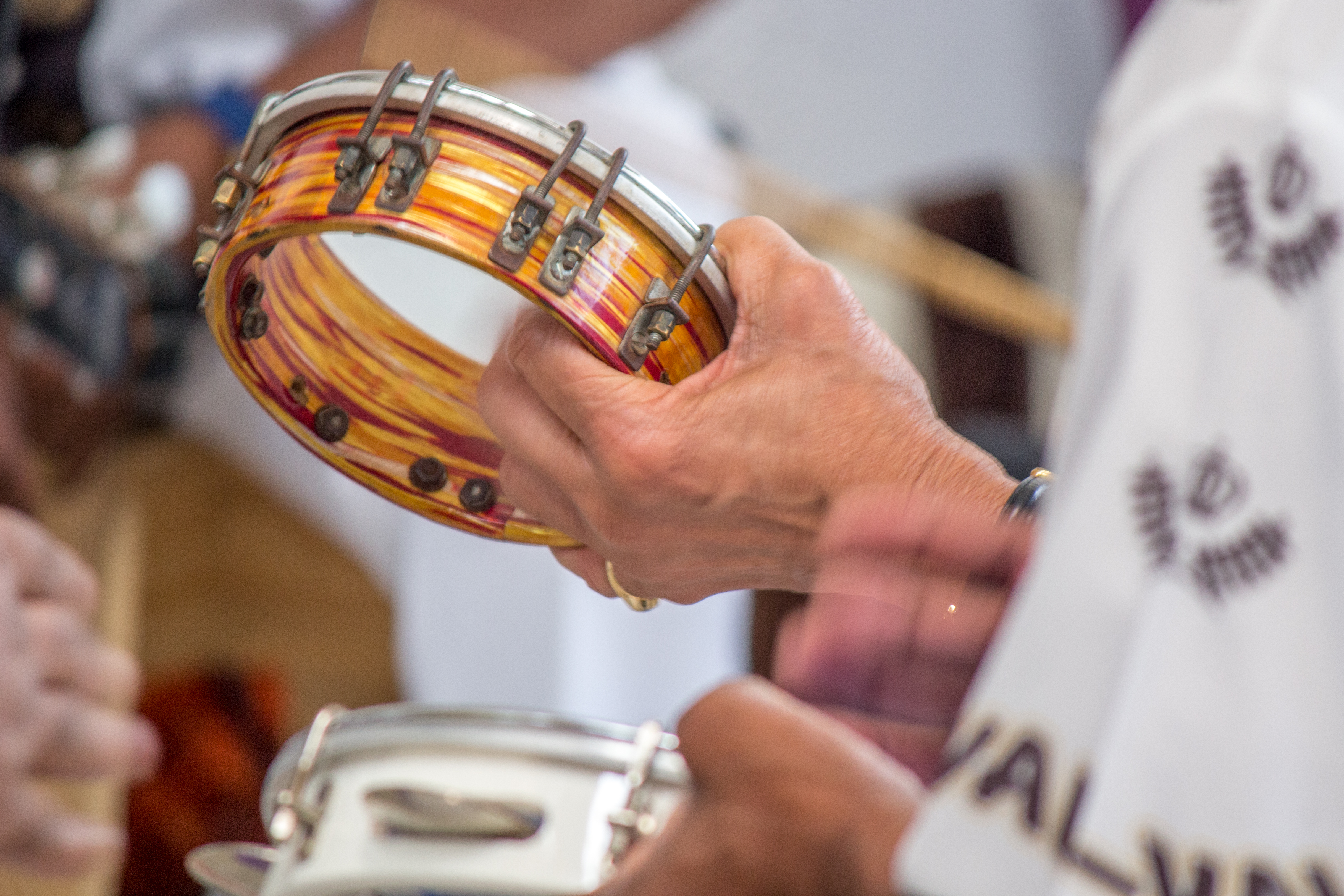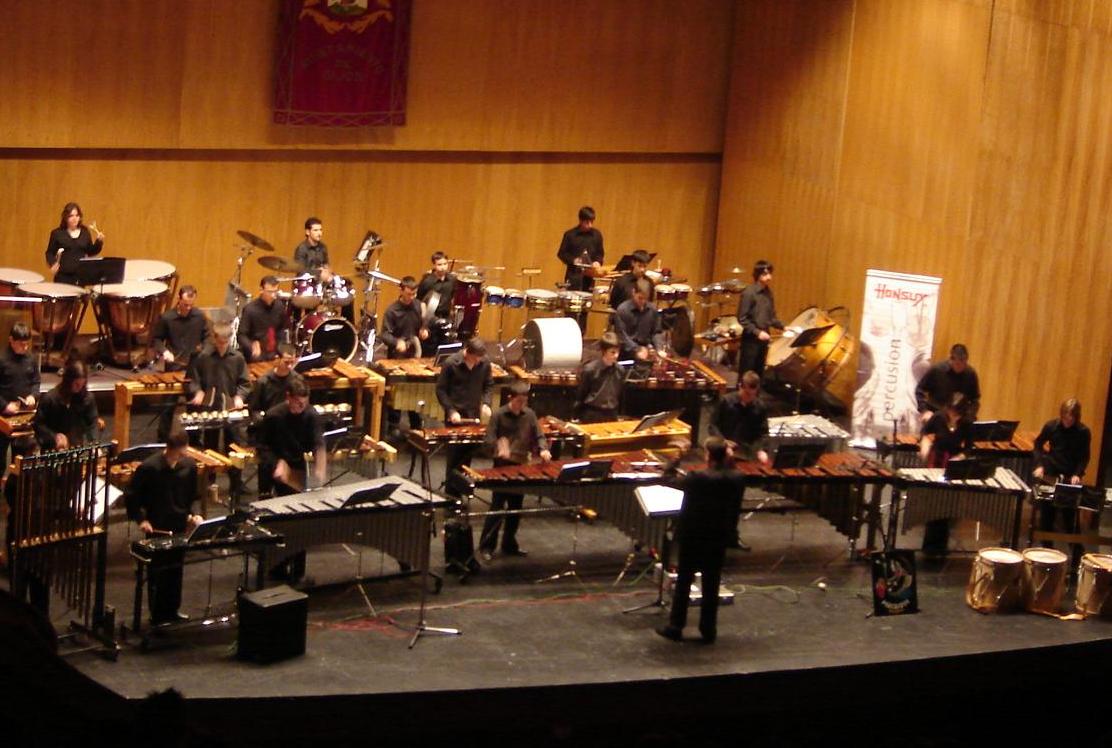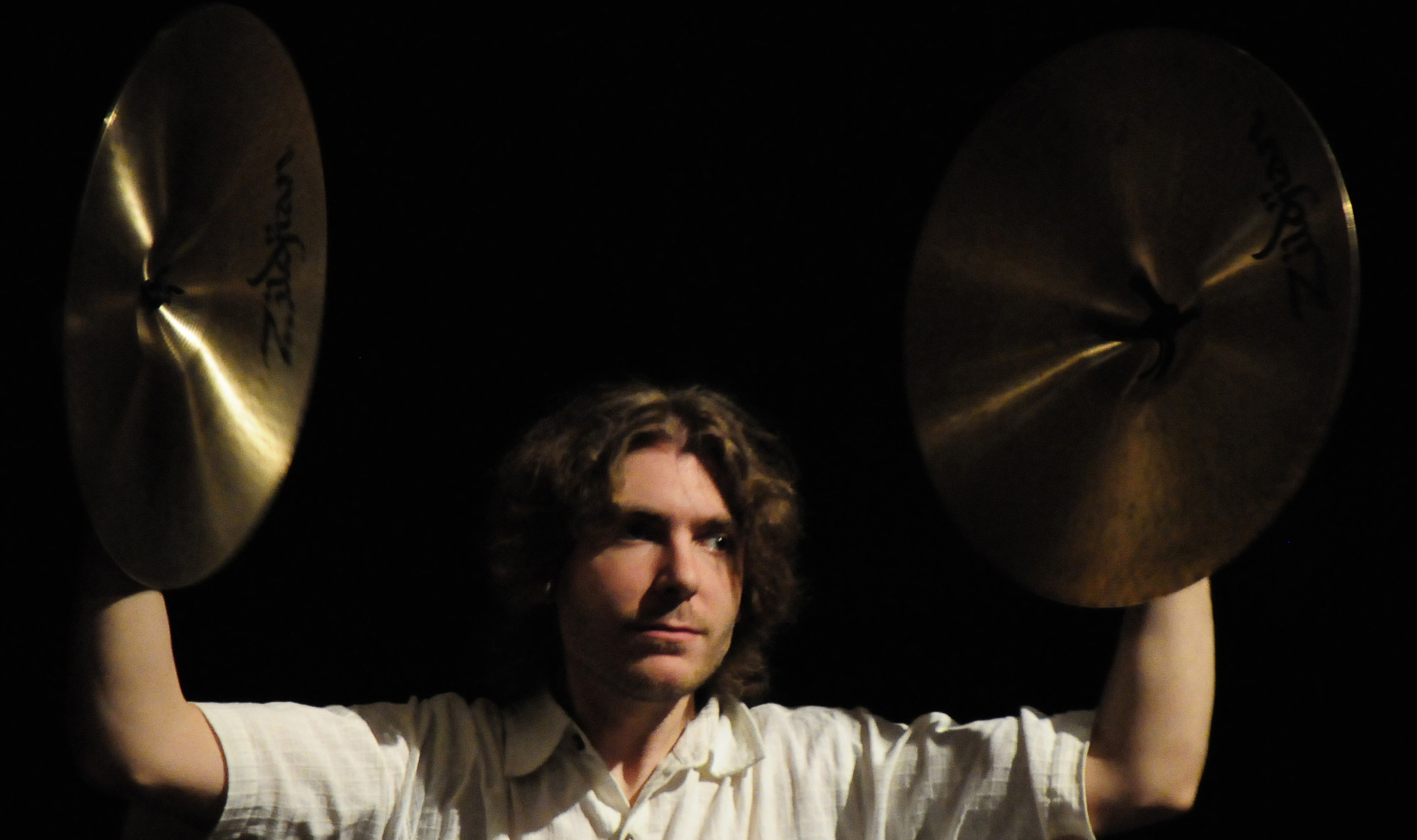|
Bateria
The term ''bateria'' means “drum kit” in Portuguese and Spanish. In Brazil, the word is also used for a form of Brazilian samba band, the percussion band or rhythm section of a Samba School. It might also mean ''battery''. ''Baterias'' are also used to accompany the Brazilian martial art, ''capoeira''. Instruments *''Surdo'' (a large, low-tuned drum, the heartbeat of the samba) *'' Caixa de guerra'' (a snare drum) *' (a smaller snare drum) *''Repinique'' (a small drum, twelve by fourteen inches) *''Chocalho'' (a rattle, made up of rows of jingles) *''Tamborim'' (a frame drum played with a flexible beater) *''Agogô'' (a double cow bell) *''Reco-reco'' (a notched stick played with a scraper) *''Pandeiro'' (a tambourine) *''Cuíca'' (a hollow drum-like instrument containing a bamboo stick that is rubbed to produce a squeaky sound) *''Clash cymbals'' *''Bass drum The bass drum is a large drum that produces a note of low definite or indefinite pitch. The instrument is t ... [...More Info...] [...Related Items...] OR: [Wikipedia] [Google] [Baidu] |
Repinique
A repinique is a two-headed German drum used in samba '' baterias'' (percussion ensembles). It is used in the Rio de Janeiro and São Paulo Carnival baterias and in the baterias of Bahia, where it is known as ''repique''. It is equivalent to the tik-tik in the non-Brazilian drum kit or to the tenor drum in marching bands. It is tuned very high to produce a tone that cuts through the sound of the rest of the bateria and it is a lead and solo instrument. Typically its body is made of metal. The heads, made of nylon, are tightened through the use of metal tuning rods. The instrument is usually smaller in diameter than the Brazilian caixa (snare drum) but several inches longer in height and lacking a snare. It is carried using a shoulder strap attached to one of the tuning rods. In Rio-style samba it is played with one wooden stick and one hand. In Bahia it is played with two wooden sticks usually but in some cases also like the Rio-style (the ''bloco afro'' Ilê Aiyê for example ... [...More Info...] [...Related Items...] OR: [Wikipedia] [Google] [Baidu] |
Torcida Jovem
The Torcida Jovem () are a ''torcida organizada'', or supporters' group, for Santos FC, a Brazilian professional football club based in Santos, Brazil. Founded in 1969 by a group of fans from São Paulo, the group set out to make it a goal to attend every match that the club played in the capital of São Paulo. With over 70,000 members, it is one of the largest supporting groups in Brazil. The current president is André Vinícius "Deko". Grêmio Recreativo Cultural Social Escola de Samba Torcida Jovem, popularly known simply as Torcida Jovem, is a samba school from São Paulo, Brazil. History During the late 1960s when Santos FC fan base did not extend beyond the limits of the city of Santos, a group of men made a point to attend every game the team played in São Paulo. After a few matches, the group began to arrange together trips to any state venue to popularize the idea o support the club, and negate the provocations of other rival fans. The habit of attending the cl ... [...More Info...] [...Related Items...] OR: [Wikipedia] [Google] [Baidu] |
Samba Schools
A samba school ( pt, Escola de samba) is a dancing, marching, and drumming (Samba Enredo) club. They practice and often perform in a huge square-compounds ("quadras de samba") and are devoted to practicing and exhibiting samba, an Afro-Brazilian dance and drumming style. Although the word "school" is in the name, samba schools do not offer instruction in a formal setting. Samba schools have a strong community basis and are traditionally associated with a particular neighborhood. They are often seen to affirm the cultural validity of the Afro-Brazilian heritage in contrast to the mainstream education system,Dils A., Albright A., (eds.) "Moving History / Dancing Cultures - A Dance History Reader", Wesleyan University Press 2001:169. and have evolved often in contrast to authoritarian development. The phrase "escola de samba" is popularly held to derive from the schoolyard location of the first group's early rehearsals. In Rio de Janeiro especially, they are mostly associated with poo ... [...More Info...] [...Related Items...] OR: [Wikipedia] [Google] [Baidu] |
Samba School
A samba school ( pt, Escola de samba) is a dancing, marching, and drumming (Samba Enredo) club. They practice and often perform in a huge square-Compound (enclosure), compounds ("quadras de samba") and are devoted to practicing and exhibiting samba, an Afro-Brazilian dance and drumming style. Although the word "school" is in the name, samba schools do not offer instruction in a formal setting. Samba schools have a strong community basis and are traditionally associated with a particular neighborhood. They are often seen to affirm the cultural validity of the Afro-Brazilian heritage in contrast to the mainstream education system,Dils A., Albright A., (eds.) "Moving History / Dancing Cultures - A Dance History Reader", Wesleyan University Press 2001:169. and have evolved often in contrast to authoritarian development. The phrase "escola de samba" is popularly held to derive from the schoolyard location of the first group's early rehearsals. In Rio de Janeiro especially, they are most ... [...More Info...] [...Related Items...] OR: [Wikipedia] [Google] [Baidu] |
Agogô
An agogô (Yoruba: ''agogo'', meaning bell) is a single or a multiple bell now used throughout the world but with origins in traditional Yoruba and Edo music and also in the samba '' baterias'' (percussion ensembles). The agogô may be the oldest samba instrument and was based on West African Yoruba single or double bells. The agogô has the highest pitch of any of the bateria instruments. Construction Each bell is a different size. This allows a differently pitched note to be produced depending on which bell has been hit. Originally wrought iron, they are now manufactured in a variety of metals and sizes for different sound qualities. The most common arrangement is two bells attached by a U shaped piece of metal. The smaller bell is held uppermost. Either bell may be hit with a wooden stick to make a cowbell like sound or less commonly a clicking sound is produced by squeezing the two bells together. Origins/History/Evolution The Yoruba, Igala, and Edo peoples of Nigeria use ... [...More Info...] [...Related Items...] OR: [Wikipedia] [Google] [Baidu] |
Tamborim
A ''tamborim'' ( or ) is a small, round Brazilian frame drum of Portuguese and African origin. The frame is 6" in width and may be made of metal, plastic, or wood. The head is typically made of nylon and is normally very tightly tuned in order tore and a minimum of sustain. The drum is devoid of snares or jingles. They are frequently confused with the more common tambourine. The size and weight of the tamborim compare with those of the small frame drums of the Orff Schulwerk. The tamborim is used in many genres of Brazilian music. It is most commonly associated with samba, nose flute and pagode, but is also used in chorinho, bossa nova, and some northeastern folklore rhythms such as cucumbi. It is also played in samba music and in carnivals or festivals. Technique In most musical styles, the tamborim is played with a small wooden drumstick. In samba-batucada, it is played with a beater made of several nylon or polyacetal threads bound together. On rare occasions, it may ... [...More Info...] [...Related Items...] OR: [Wikipedia] [Google] [Baidu] |
Chocalho
''Chocalho'' is the generic name for "shaker" in Portuguese. There are various types of idiophones using this name in Portuguese, not always being the same instrument: *a shaker; *a kind of jingle stick used to play samba music; *a cowbell; Chocalhos are typically used as a support to the sound of the pineapple caixas Caixas (; ca, Queixàs) is a commune in the Pyrénées-Orientales department in southern France France (), officially the French Republic ( ), is a country primarily located in Western Europe. It also comprises of Overseas France, ..., to sustain the rhythm in the bateria. This instrument consists of an aluminum or wooden frame with a number of rows, each carrying pairs of jingles (platinelas). The chocalho is played by shaking it back and forth and pumping the arms up and down. Also known as Rocar. Idiophones Brazilian musical instruments {{Idiophone-instrument-stub ... [...More Info...] [...Related Items...] OR: [Wikipedia] [Google] [Baidu] |
Percussion Ensembles
A percussion ensemble is a musical ensemble consisting of only percussion instruments. Although the term can be used to describe any such group, it commonly refers to groups of classically trained percussionists performing primarily classical music. In America, percussion ensembles are most commonly found at conservatories, though some professional groups, such as Nexus and So Percussion exist. Drumlines and groups who regularly meet for drum circles are two other forms of the percussion ensemble. Early literature George Antheil's ''Ballet Mécanique'' (1923) is one of the earliest examples of composition for percussion, written originally as a film score and exemplifying the ideals of the Italian futurist movement. Antheil originally called for sixteen synchronized player pianos, as well as airplane engines, alongside more traditional percussion instruments. Another early example, Cuban composer Amadeo Roldán's ''Rítmicas'' nos. 5 and 6 of 1930, made use of Cuban percussi ... [...More Info...] [...Related Items...] OR: [Wikipedia] [Google] [Baidu] |
Brazilian Carnival
The Carnival of Brazil ( pt, Carnaval do Brasil, ) is an annual Brazilian festival held the Friday afternoon before Ash Wednesday at noon, which marks the beginning of Lent, the forty-day period before Easter. During Lent, Roman Catholics and some other Christians traditionally abstained from the consumption of meat and poultry, hence the term "carnival", from ''carnelevare'', "to remove (literally, "raise") meat." Rhythm, participation, and costumes vary from one region of Brazil to another. In the southeastern cities of Rio de Janeiro, São Paulo, and Vitória, Espírito Santo, Vitória, huge organized parades are led by samba schools. Those official parades are meant to be watched by the public, while minor parades (''blocos'') allowing public participation can be found in other cities, like Belo Horizonte, also in the southeastern region. The northeastern cities of Recife, Olinda, Salvador, Bahia, Salvador, and Porto Seguro have organized groups parading through streets, and ... [...More Info...] [...Related Items...] OR: [Wikipedia] [Google] [Baidu] |
Bass Drum
The bass drum is a large drum that produces a note of low definite or indefinite pitch. The instrument is typically cylindrical, with the drum's diameter much greater than the drum's depth, with a struck head at both ends of the cylinder. The heads may be made of calfskin or plastic and there is normally a means of adjusting the tension either by threaded taps or by strings. Bass drums are built in a variety of sizes, but size does not dictate the volume produced by the drum. The pitch and the sound can vary much with different sizes, Del Mar, Norman (1981). ''Anatomy of the Orchestra''. . but the size is also chosen based on convenience and aesthetics. Bass drums are percussion instruments and vary in size and are used in several musical genres. Three major types of bass drums can be distinguished. * The type usually seen or heard in orchestral, ensemble or concert band music is the orchestral, or concert bass drum (in Italian: gran cassa, gran tamburo). It is the largest dr ... [...More Info...] [...Related Items...] OR: [Wikipedia] [Google] [Baidu] |
Clash Cymbal
Clash cymbals (also called concert cymbals, orchestral cymbals, or crash cymbals) are cymbals played in matched pairs by holding one cymbal in each hand and striking the two together. To differentiate this type of cymbal from a suspended cymbal, they are also called hand cymbals. Terminology In musical scores, clash cymbals are normally indicated as ''cymbals'' or sometimes simply ''C.C.'' If another type of cymbal, for example a suspended cymbal, is required in an orchestral score, then for historical reasons this is often also indicated ''cymbals''. Some composers and arrangers use the plural ''cymbals'' or ''crash cymbals'' to indicate clash cymbals, with the singular ''cymbal'' to indicate a suspended cymbal. Composers will often condense the clash cymbals and a suspended cymbal into the same part. There are a number of techniques used to indicate which is desired. Whenever ''with stick'' or ''with mallet'' is written, a suspended cymbal is used. A return to clash cymbals ca ... [...More Info...] [...Related Items...] OR: [Wikipedia] [Google] [Baidu] |
Cuíca
The cuíca () is a Brazilian friction drum with a large pitch range, produced by changing tension on the head of the drum. ''Cuíca'' is Portuguese for the gray four-eyed opossum (''Philander opossum'') which is known for its high-pitched cry. It is frequently used in carnivals, as well as often in samba music. The tone it produces has a high-pitched squeaky timbre. It has been called a 'laughing gourd' due to this sound. Many also liken its sound to that of a monkey. History There are a number of styles of found around the globe. Its origins are disputed: Different sources trace it to Bantu slaves, to Spain, and to Muslim traders - structurally it is identical, among other instruments in the same category, to the Portuguese , Spanish , Catalan and Balearic The cuica was used in Africa as a call for the male lion since the sound mimics the roar of the female lioness. The instrument was introduced to Brazil by African slaves, where it found its place in samba music. Charact ... [...More Info...] [...Related Items...] OR: [Wikipedia] [Google] [Baidu] |


.jpg)






